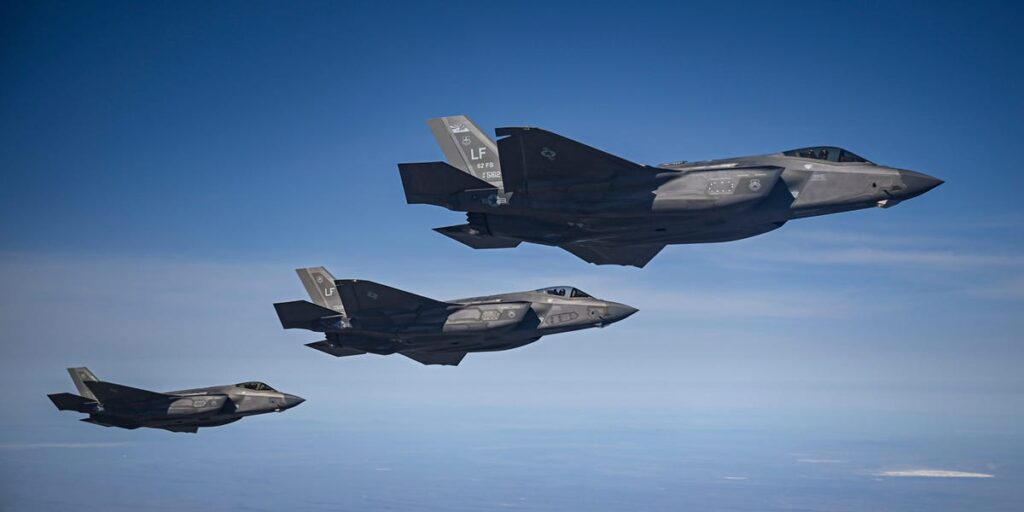After Russian MiG-31 fighter jets flew into NATO member Estonia’s airspace without permission, Italian F-35 stealth fighters scrambled to respond.
The incident marks the fourth time this year the Russian military has has violated Estonian airspace. It also comes at a time of rising tensions between the alliance and Moscow.
On Friday, the Republic of Estonia’s defense forces confirmed that three Russian MiG-31s had entered airspace near Vaindloo Island in the Gulf of Finland north of Estonia without permission and remained there for around 12 minutes.
The MiG-31 “Foxhound,” as NATO refers to it, is a high-speed interceptor aircraft designed by Mikoyan during the Cold War. The two-seater combat aircraft, born out of design elements for the earlier MiG-25, can carry a range of air-to-air missiles and, for the modified versions, air-to-surface missiles.
The Estonian foreign ministry and military statements on the incursion did not provide details on any armaments.
“The fighter jets did not have flight plans, and their transponders were switched off,” per the defense forces press release. “At the time of the airspace violation, the fighter jets did not have two-way radio communication with Estonian air traffic control.”
In response to the breach of allied airspace, Italian air force F-35 Lightning II stealth fighters were scrambled to intercept the Russian jets, Estonia said. The F-35s had been participating in the NATO Baltic Air Policing Mission and are stationed at Ämari Airbase in Estonia. It’s unknown how many F-35s were dispatched.
The F-35 is a fifth-generation stealth aircraft built for a mixture of different mission sets. Coming in three variants for varied operational demands, the jets feature an advanced collection of sensors, stealth capabilities, and network solutions that give them multirole flexibility in combat. The Lockheed Martin jet is a very expensive platform, but it is recognized as an essential component of US and allied airpower.
Estonia’s foreign ministry called the incursion “unprecedentedly brazen,” while Kaja Kallas, the European Union high representative for foreign affairs and security policy, said that the Russian violation was “an extremely dangerous provocation” and marked the third such violation of EU airspace in days.
One of the events Kallas was referring to occurred last week when Russian drones violated Poland’s airspace. NATO aircraft, including Dutch F-35s, scrambled in response to the drones and shot some down. It was an incident that one alliance spokesperson described as the first time that NATO aircraft “have engaged potential threats in allied airspace.”
Other alliance officials and experts said the event was a test of NATO countries’ defense capabilities as Russia continues to push and probe the alliance’s responses.
Moscow said it had not planned to target Poland with last week’s drone incursion. The Russian embassy didn’t immediately respond to Business Insider’s request for comment on Friday’s MiG-31 incident, and there have so far been no public statements.
Amid Russia’s war in Ukraine, Western officials and top war experts have been raising concerns that the alliance, particularly members along the eastern flank, may face continued Russian aggression and the war may spread beyond Ukraine.
And as drone attacks, missile barrages, and aerial assaults play a substantial role in Ukraine, there’s been a growing recognition of the need for stronger, layered, modern air defenses, in which NATO is increasingly investing.
Read the full article here


